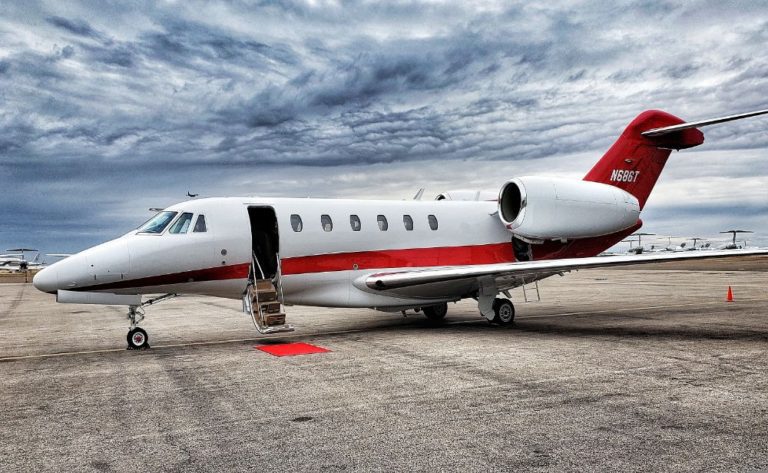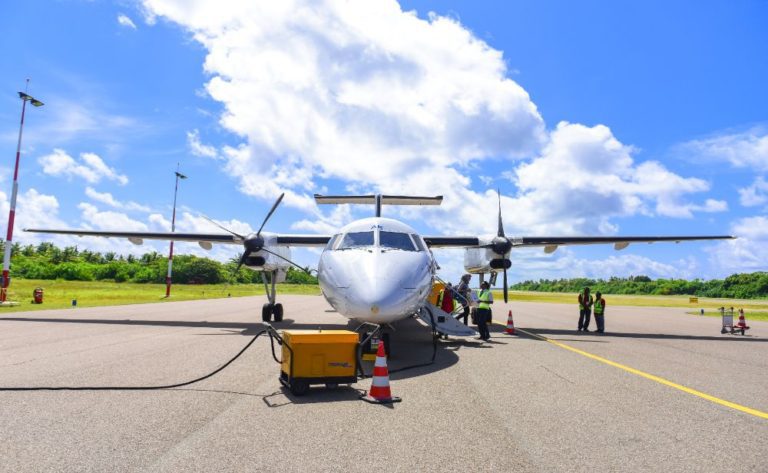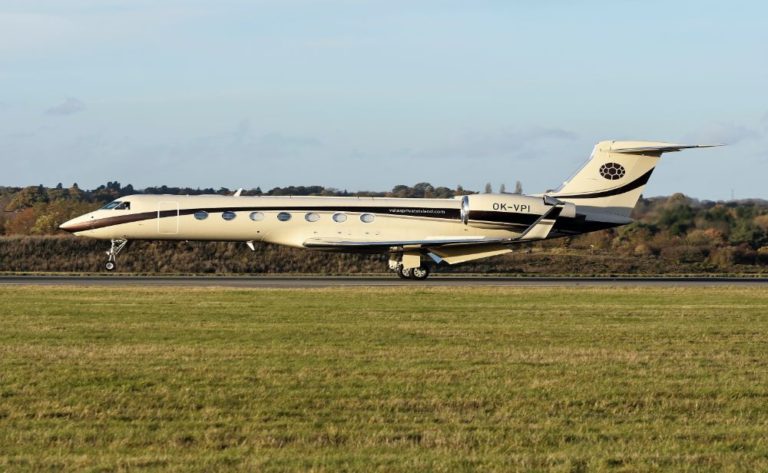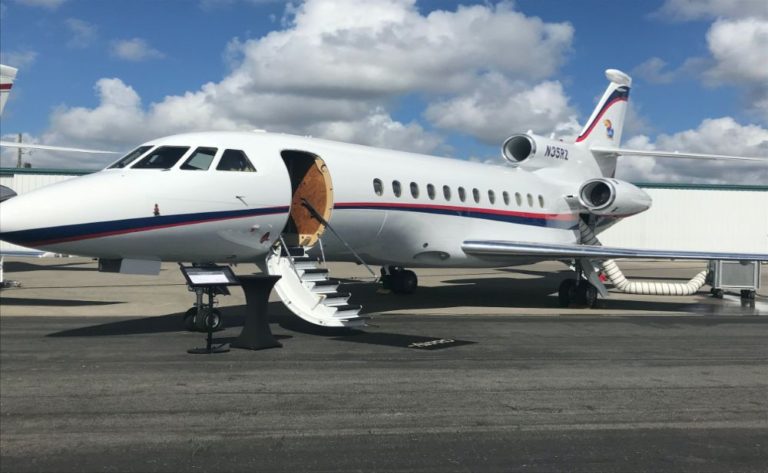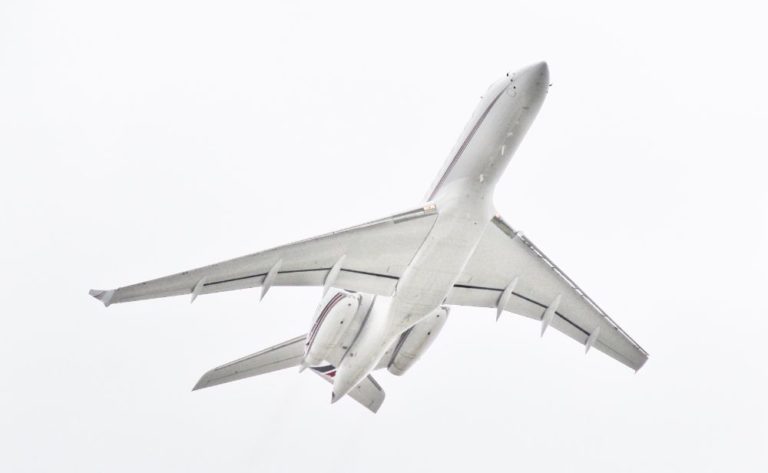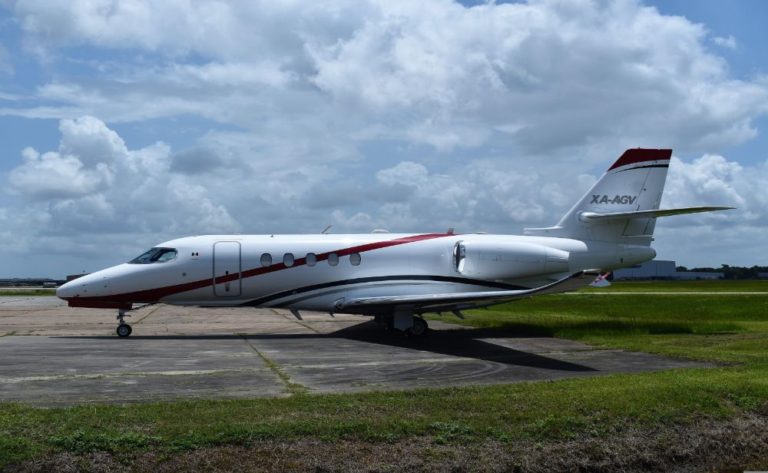Boeing Business Jet (BBJ)

When Boeing and GE Aviation announced the Boeing Business Jet in 1996, they offered customers the chance to purchase a brand-new 737 airliner from the factory for the price of $36 million and have it transformed into a one-of-a-kind, ultra-luxurious private jet that could travel anywhere in the world. For those with sufficiently deep pockets, the number of interior configurations available was practically beyond bounds.
Boeing began by taking the fuselage of a 737-700 and joined it to the landing gear and center fuselage portion of a 737-800. Next, the company added the larger fuel capacity wing of the 737-800. It is possible to place anywhere from three to ten auxiliary fuel tanks in the belly of the BBJ, which provides the aircraft with a range of up to 6,196 nautical miles with eight passengers, which is equivalent to around 14 hours in the air. GE holds a 50 percent ownership stake in the consortium that manufactures the CFM56-7B27 engines, which are used to power the aircraft.
In the years that followed, Boeing introduced two stretched-out variants of the BBJ, which came to be known as the BBJ2 and BBJ3, respectively. The BBJ2 has a cabin capacity that is 25 percent higher than the original model, but it comes at the expense of a little shorter range. It came about in part due to the fact that the BBJ has a limited amount of space for luggage in the cargo hold due to the presence of additional belly tanks. In 2005, Boeing made public their plans to build an even larger version of the BBJ, which would be based on the Next Generation 737-900ER. In the same vein as the BBJ2, it has a range that is 800 to 1,000 nautical miles less than the original BBJ.
Because equipping the cabin might occasionally add $10 million (in 1998 dollars), third-party completion centres and their affiliated designers and suppliers found the original BBJ to be a goldmine. This was due to the fact that the price of an aircraft may be increased by outfitting the cabin. Early customers were led to believe that completions such as paint, interiors, auxiliary fuel systems, and winglets could be completed within a period of 12 to 18 months; however, this turned out to be mostly untrue for a variety of reasons: The FAA aircraft modification approval process proved to be more complicated than anticipated, and several completion centres and related vendors had ambitions that outstripped their abilities. Boeing did not initially play nicely with technical data exchange.
Customers quickly understood that this was a significant departure from the traditional method of calling Gulfstream or Bombardier to place an order for a brand-new GV or Global. It was more like the gradual loss of blood and heat that one experiences when building a house, particularly a really large house. The cabin of a BBJ has dimensions of 79 feet, 2 inches in length and 11 feet, 7 inches in width, which results in a total floor area of 807 square feet. This provides ample space for an oversized galley, crew rest area, three lavatories, a lounge or two, a conference/dining room, one or two private staterooms, and a shower. In the beginning, there was not a single interior design that was the same as any other, and the interiors ranged from luxurious pleasure palaces to practical corporate shuttles with seating for fifty people.
A small number of consumers made issues worse by requesting that their residential architects or yacht designers—people who are often blissfully ignorant of all things pertaining to aircraft—add their input. This caused the process to become even more difficult while also providing outcomes that were visually intriguing. In the end, a number of the commercial partners involved in the dance did not make it, and Boeing adopted a more hands-on approach to reducing the backlog of completions.
Throughout the years, a great deal of knowledge has been gained. Now, a select group of experienced completion and refurbishment centres have prepackaged options for BBJs, and these are becoming increasingly relevant as a new generation of more fuel-efficient variants, called BBJ MAX, are about to hit the market, starting with the larger models. Prepackaged options for BBJs have been available for some time now. Deliveries of the BBJ MAX 7, the model that will succeed the original BBJ and replace it, won’t start until 2022.
There are some fantastic deals to be had on lightly used first-generation BBJs available today for published prices ranging from $19 million to $48 million, with total times ranging from as little as 2,000 hours for a model that is 10 years old to 10,000 hours for an aircraft that came off the line in 1998. These first-generation BBJs are available in a variety of configurations, including single-engine, twin-engine, and tri-engine variants. (The average price for a BBJ from the year 2006 that has around 3,900 hours is $34.4 million.) Even though it might seem like a lot, 10,000 hours is really a rather low number for an aircraft that was designed to airline specifications; 737s can easily exceed the 100,000-hour mark in flight time. Because it is anticipated that the cost of a finished new BBJ MAX 7 will be in the neighbourhood of $100 million, a preowned BBJ is worthy of careful consideration.
The aircraft, without a doubt, has a lot going for it in terms of durability and ubiquity; it’s built on an airframe that already has more than 10,000 flying examples all over the world, and there is no shortage of pilots, mechanics, or parts for it. The majority of the 134 BBJs that were manufactured were constructed between the years 1998 and 2001, while the majority of the remaining BBJs were constructed between the years 2002 and 2010.
If you do make the decision to move into the realm of the super-sized cabin, there are a number of unique aspects that you will need to take into consideration before making the move.
Let’s begin with something that might be a deal-breaker for you (other than the price tag): Where do you plan to store it, exactly? The BBJ has a ground-to-tip-of-tail height of 41 feet, which is over 15 feet taller than the Gulfstream G650’s measurement for the same distance. Because of this, you won’t be able to store it in the majority of hangars. Although many BBJs are able to live successfully outside, it is considerably more challenging to keep them clean when they are kept in this environment. Pavement is yet another factor to take into account. A fully loaded BBJ tips the scales at 171,000 pounds, which means that if you operate from fields with weight restrictions or regions where density altitude is a concern, the BBJ is probably not for you.
The majority of these aircraft are on registries from a list of countries that sounds like the table of contents for a book called The Hitchhiker’s Guide to Tax Havens, and this percentage has remained consistent over the past few years, ranging from 10 to 14 percent of the fleet being available for sale at any given time. (Who knew that the Falkland Islands existed?) Therefore, the acquisition team you employ needs to have experience dealing with aeroplanes that are registered in a foreign country.
Also, as was mentioned earlier, the majority of legacy BBJs are getting on in years and are either at or approaching major inspection intervals. However, this can be a positive thing if the inspection is carried out in conjunction with the refurbishment of the aircraft, which is a tactic that was successfully utilised by Switzerland’s Jet Aviation Basel in the previous year. The removal of any aircraft structure, such as internal doors or walls, must be avoided at all costs during the refurbishment process. Additionally, the original data package must be obtained from the owner or the centre that was responsible for the initial completion. (Jet Aviation Basel had completed the procedure in 1999, when the aircraft was still brand new from the manufacturer, therefore there was no problem with it.)
After that, it’s just a matter of giving the exterior a fresh coat of paint, updating the upholstery, fabrics, and veneers inside, and installing updated soundproofing (which is both more effective and more lightweight than it was 20 years ago), a new cabin management system, and wireless internet access. At a height of 41,000 feet, the cabin altitude will drop from 8,000 to 6,500 feet if the aircraft in issue has not already been upgraded to lower cabin altitude. You should strongly consider purchasing this upgrade if it has not already been purchased. Additionally, it is quite likely that the cockpit will require an upgrade to include components such as the Future Aircraft Navigation System (FANS) and ADS-B Out. A refurbishment expenditure of between $2 million and $5 million will produce a BBJ that looks brand new and is equipped with the majority of the most recent bells and whistles. This BBJ will be ready to serve for decades to come while providing one of the most comfortable cabins in the air.
